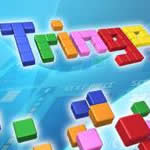- Wondering how to get Monopoly GO! free rolls? Well, you’ve come to the right place. In this guide, we provide you with a bunch of tips and tricks to get some free rolls for the hit new mobile game. We’ll …
Best Roblox Horror Games to Play Right Now – Updated Weekly
By Adele Wilson
Our Best Roblox Horror Games guide features the scariest and most creative experiences to play right now on the platform!The BEST Roblox Games of The Week – Games You Need To Play!
By Sho Roberts
Our feature shares our pick for the Best Roblox Games of the week! With our feature, we guarantee you'll find something new to play!Type Soul Clan Rarity Guide – All Legendary And Common Clans Listed!
By Nathan Ball
Wondering what your odds of rolling a particular Clan are? Wonder no more, with my handy Type Soul Clan Rarity guide.
Tringo Review
Tringo has the unique distinction of being the first game to be invented inside a virtual world. It first saw the light of day in the 3D online social community Second Life, where it was created by a resident who goes by the screen-name of Kermitt Quirk. The game, which is a clever cross between Tetris and Bingo, reportedly became so popular in Second Life that players started to complain that it was ruining the experience because people were only logging in to play Tringo!

Tringo has the unique distinction of being the first game to be invented inside a virtual world. It first saw the light of day in the 3D online social community Second Life, where it was created by a resident who goes by the screen-name of Kermitt Quirk. The game, which is a clever cross between Tetris and Bingo, reportedly became so popular in Second Life that players started to complain that it was ruining the experience because people were only logging in to play Tringo!
That was two years ago. Since then, Tringo has been licensed by a “real world” publisher and made into a downloadable casual game for non-Second Lifers to enjoy.
It seems like perhaps something got lost in the translation, however. When ripped out of the Second Life setting, Tringo seems to lose much of what made it so compelling in the first place.
The game is played on a 5×5 grid. There are 28 different shapes based on cubic designs that each appear once in the game, and the goal is to place each shape in the grid so that it interlocks with other shapes to form squares of 4, 6 or 9 solid blocks, which clears those blocks from the board.
Points are awarded for successfully clearing blocks, but if there isn’t enough free space on the grid to place a shape, then there’s no choice but to skip it and lose points. The round ends when all 28 pieces have either been successfully placed or skipped. There’s also a small points bonus for any free squares left over at the end of the round.
Tringo the game concept is pretty fun in its own right, but the problem with Tringo the download game is the lack of framework and context around the game concept itself, making it a surprisingly barren offering. The main game mode (titled “original”) literally consists of a single round, and is over in a couple of minutes. There’s also untimed mode, where you can take your time and consider your next move without the clock running down, as well as modes to play 5 and 10 rounds in a row, respectively.
After completing the game, a graph is displayed showing your performance, and your score is recorded in a Hall of Fame.
Where other puzzle games feature a story mode or some sort of logical progression of levels, Tringo does not. The only goal in Tringo is to beat your own high score, and this isn’t a very strong compulsion to keep playing.
In Second Life, residents have described the phenomenon of the “Tringo Room” where players sit around tables in floating chairs taking part in Tringo tournaments, with encouragement and friendly taunts flying through the air. It seems that Tringo becomes a far less compelling game when it’s ripped out of this highly social, arcade-like atmosphere and played alone and offline.
Tringo is a good design concept, but it just doesn’t fare well outside of its natural habitat in this particular version.

The good

The bad
More articles...
Monopoly GO! Free Rolls – Links For Free Dice
By Glen Fox
Wondering how to get Monopoly GO! free rolls? Well, you’ve come to the right place. In this guide, we provide you with a bunch of tips and tricks to get some free rolls for the hit new mobile game. We’ll …Best Roblox Horror Games to Play Right Now – Updated Weekly
By Adele Wilson
Our Best Roblox Horror Games guide features the scariest and most creative experiences to play right now on the platform!The BEST Roblox Games of The Week – Games You Need To Play!
By Sho Roberts
Our feature shares our pick for the Best Roblox Games of the week! With our feature, we guarantee you'll find something new to play!Type Soul Clan Rarity Guide – All Legendary And Common Clans Listed!
By Nathan Ball
Wondering what your odds of rolling a particular Clan are? Wonder no more, with my handy Type Soul Clan Rarity guide.







